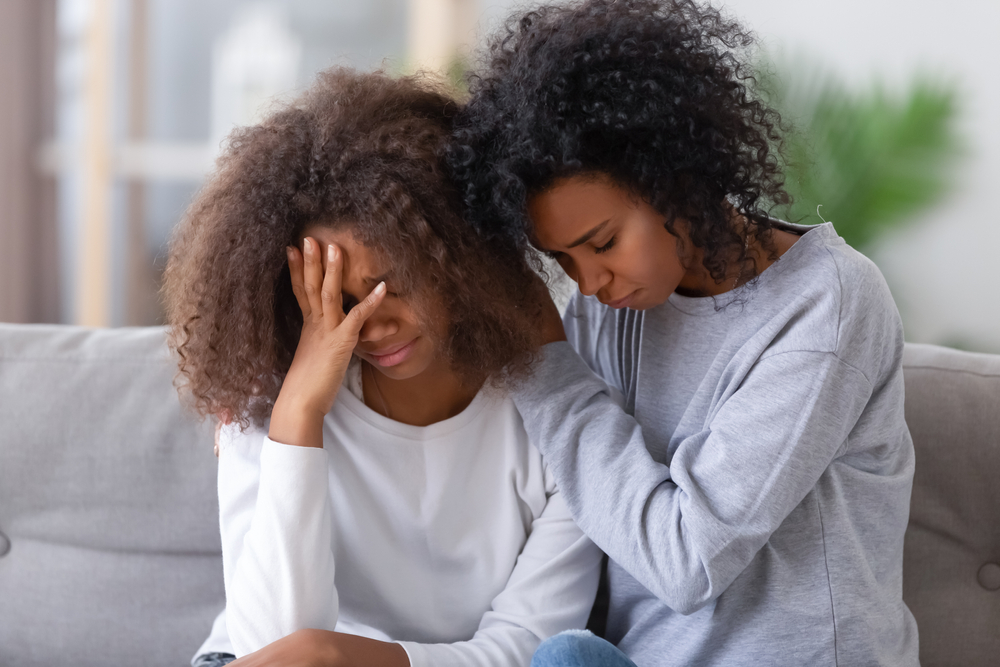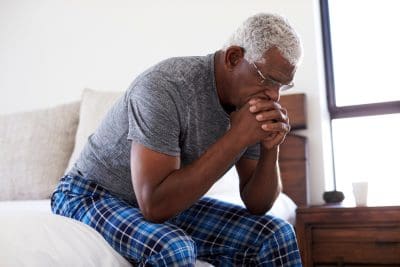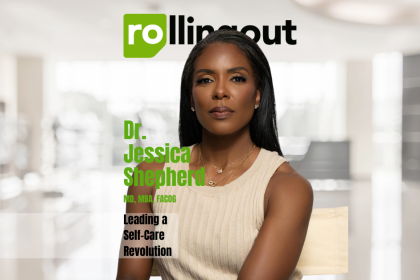You’re watching a movie when the hero takes a brutal hit, and suddenly you find yourself wincing, your body tensing as if you were the one being struck. Or maybe you’ve watched someone get a paper cut and felt a sharp sensation in your own finger. If experiences like these sound familiar, you’re not imagining things – your brain is actually processing someone else’s pain as if it were happening to your own body.
This phenomenon, where observing another person’s suffering triggers genuine physical sensations in your own body, reveals one of the most fascinating aspects of human neurobiology. Some people experience this empathic pain so intensely that they have to look away from others’ injuries or medical procedures, while others seem completely unaffected by witnessing suffering.
The mirror neurons that blur the line between self and other
Deep within your brain lies a network of specialized cells called mirror neurons that fire both when you perform an action and when you observe someone else performing the same action. These remarkable cells essentially create a neural bridge between your experience and others’, allowing your brain to simulate what another person might be feeling.
When you watch someone stub their toe, your mirror neurons activate many of the same brain regions that would fire if you had stubbed your own toe. This neural mirroring doesn’t just apply to actions – it extends to sensations, emotions, and even pain experiences. Your brain literally rehearses the observed experience, creating a shadow version of someone else’s suffering within your own neural networks.
This mirroring process happens automatically and unconsciously. You don’t choose to activate these neural patterns – they fire spontaneously whenever you witness another person’s pain or distress. The intensity of this response varies dramatically between individuals, creating a spectrum from those who barely notice others’ suffering to those who feel it as acutely as their own.
The evolutionary advantage of this system seems clear – beings who could accurately perceive and respond to others’ distress would be more successful at group survival, cooperative behavior, and child-rearing. Your capacity to feel others’ pain likely represents an ancient survival mechanism that helped our ancestors thrive in social groups.
Why your nervous system treats observed pain as real
When you witness someone experiencing pain, your nervous system doesn’t make a clear distinction between observed and actual threat. The same brain structures that process your own physical pain – including the anterior cingulate cortex and anterior insula – activate when you watch others suffer, creating genuine physiological responses in your body.
Your heart rate might increase, your breathing may become shallow, and stress hormones flood your system as if you were the one in danger. These aren’t just psychological responses – they’re measurable physiological changes that demonstrate how deeply your nervous system resonates with others’ experiences of pain and suffering.
This response system evolved when distinguishing between your own pain and others’ pain wasn’t as crucial for survival as it is today. In small tribal groups, another person’s injury or distress directly affected your own chances of survival, making a strong empathic response highly adaptive for group cohesion and mutual protection.
In modern life, this same system can become overwhelming when constantly exposed to others’ suffering through media, social networks, or high-stress environments. Your nervous system may respond to observed pain with the same intensity it would apply to actual physical threats, leading to chronic stress and emotional exhaustion.
The genetic lottery that determines your empathic intensity
Not everyone experiences empathic pain with the same intensity, and genetics plays a significant role in determining where you fall on this spectrum. Variations in genes affecting dopamine sensitivity, oxytocin production, and neural connectivity all influence how strongly you resonate with others’ suffering.
Some people possess genetic variations that make their mirror neuron systems hyperresponsive, causing them to feel others’ pain almost as intensely as their own. These individuals might find medical shows unwatchable, feel physical discomfort when seeing others injured, or become overwhelmed in environments where suffering is present.
At the other end of the spectrum, genetic variations can create less responsive empathic systems. These individuals might seem callous or unfeeling, but they’re often simply experiencing others’ pain at a much lower intensity than more empathically sensitive people. Neither response pattern is inherently better or worse – they represent different adaptive strategies for navigating a world filled with suffering.
Your genetic empathy baseline interacts with environmental factors like childhood experiences, trauma history, and cultural background to create your unique empathic fingerprint. Understanding your own position on this spectrum can help you make sense of your responses to others’ suffering and develop appropriate coping strategies.
How childhood experiences shape your pain empathy
Your early experiences with pain and suffering – both your own and others’ – significantly influence how your empathic pain system develops. Children who grew up in environments with frequent injury, illness, or emotional suffering often develop heightened sensitivity to others’ pain as an adaptive survival mechanism.
If you learned early that paying close attention to others’ distress was necessary for your safety or survival, your brain may have developed an enhanced capacity for detecting and responding to pain cues. This hypervigilance can make you exceptionally compassionate and responsive to others’ needs, but it can also make you vulnerable to empathic overload.
Conversely, children who experienced chronic pain themselves, or who were repeatedly exposed to others’ suffering without being able to help, sometimes develop protective numbness to others’ pain. This emotional numbing represents an adaptive response to overwhelming empathic demands, though it can sometimes make forming close relationships more challenging.
Trauma experiences can also dysregulate your empathic pain system, making it either hyperresponsive or hyporesponsive to others’ suffering. Understanding how your personal history influences your current empathic responses can provide valuable insight into why you react to others’ pain the way you do.
The overwhelming burden of feeling too much
For people with highly sensitive empathic pain systems, witnessing suffering can become genuinely debilitating. These individuals might avoid medical shows, news coverage of disasters, or even social gatherings where emotional pain might be discussed, because the vicarious suffering becomes too intense to tolerate.
This heightened empathic sensitivity can manifest physically through headaches, muscle tension, digestive issues, and fatigue after witnessing others’ pain. The body responds to observed suffering with the same stress responses it would mount for actual physical threats, leading to genuine physical exhaustion from empathic experiences.
The emotional toll can be equally significant. Highly empathic individuals often struggle with boundaries, taking on others’ emotional and physical pain as their own responsibility. This can lead to caregiver burnout, relationship difficulties, and chronic anxiety about others’ wellbeing.
Many sensitive empaths report feeling guilty about their need to limit exposure to others’ suffering, viewing their self-protective behaviors as selfish or uncaring. Understanding that empathic sensitivity represents a genuine neurobiological difference can help reduce this self-judgment and support more effective self-care strategies.
The protective numbness that shields some minds
At the other end of the empathic spectrum are individuals who seem remarkably unaffected by others’ suffering. This apparent callousness often triggers judgment from more empathically sensitive people, but reduced empathic pain responses can serve important protective and social functions.
Healthcare workers, emergency responders, and others who regularly encounter severe suffering often develop what appears to be empathic numbness as a psychological survival mechanism. Without this protective barrier, the constant exposure to pain and trauma would quickly lead to burnout and inability to function effectively in helping roles.
This empathic regulation isn’t necessarily permanent or pathological – many people can consciously modulate their empathic responses based on the situation and their capacity to help. The ability to feel others’ pain when appropriate while maintaining emotional boundaries when necessary represents a sophisticated form of emotional regulation.
Some individuals with naturally lower empathic pain sensitivity aren’t lacking in compassion – they simply process others’ suffering through cognitive rather than visceral pathways. They may offer practical help and support without experiencing the physical distress that accompanies high empathic sensitivity.
Cultural influences on pain empathy expression
Different cultures vary dramatically in how they express and respond to others’ pain, influencing both the development and expression of empathic pain responses. Some cultures encourage emotional expression and shared suffering, while others value stoicism and emotional restraint.
In cultures that emphasize collective wellbeing and interdependence, individuals often develop stronger empathic pain responses as a way of maintaining group cohesion and mutual support. The ability to feel others’ suffering intensely is viewed as a valuable social skill that strengthens community bonds.
Other cultures that prioritize individual resilience and emotional self-regulation may inadvertently suppress empathic pain responses, viewing excessive sensitivity to others’ suffering as weakness or dysfunction. These cultural messages can influence how comfortable people feel acknowledging and expressing their empathic experiences.
Understanding the cultural context of empathic responses helps explain why people from different backgrounds might react so differently to the same suffering scenario. Neither response pattern is inherently superior – they represent different cultural adaptations to the challenge of living in community while managing individual emotional wellbeing.
The gender patterns in empathic pain responses
Research consistently shows gender differences in empathic pain responses, with women generally demonstrating stronger neural activation when witnessing others’ suffering. These differences appear to stem from both biological factors like hormone influences and social factors like cultural expectations about emotional expression.
Hormones like estrogen and oxytocin, which fluctuate more dramatically in women, enhance empathic sensitivity and pain responsiveness. These biological influences interact with social expectations that often encourage women to be more attuned to others’ emotional and physical needs.
Men aren’t lacking in empathic capacity, but they often show different patterns of empathic response that may be less visible or dramatic. Male empathic responses frequently manifest through problem-solving behaviors rather than emotional mirroring, representing a different but equally valid form of empathic engagement.
These gender patterns exist on a spectrum, with significant individual variation within each gender. Understanding these general tendencies can help explain some of the differences in how people respond to suffering while avoiding stereotypes about empathic capacity based on gender alone.
When empathic pain becomes a clinical concern
For some individuals, empathic pain responses become so intense that they interfere with daily functioning and mental health. This hyperempathy can contribute to anxiety disorders, depression, and chronic stress-related health problems that require professional attention.
Signs that empathic pain responses may need professional support include avoiding normal social situations due to empathic overwhelm, experiencing physical symptoms after witnessing others’ suffering, or feeling responsible for others’ pain in ways that create guilt and anxiety.
Therapeutic approaches for managing excessive empathic sensitivity often focus on developing emotional boundaries, learning to distinguish between your own emotions and others’, and practicing self-care strategies that protect your nervous system from empathic overload.
On the other end of the spectrum, individuals who experience very little empathic pain may struggle with relationship intimacy or social connection. While this doesn’t necessarily indicate pathology, therapy can help develop cognitive empathy skills that support social relationships even when visceral empathic responses are limited.
Developing healthy empathic boundaries
Whether you experience intense empathic pain or very little, developing healthy empathic boundaries benefits both your wellbeing and your ability to help others effectively. These boundaries aren’t about becoming callous but about managing your empathic responses in sustainable ways.
For highly sensitive empaths, learning to recognize the difference between your own emotions and others’ represents a crucial skill. This awareness allows you to respond compassionately to others’ suffering without taking it on as your own burden to carry.
Practical strategies include limiting exposure to traumatic media when you’re already emotionally depleted, practicing grounding techniques that help you return to your own body after empathic experiences, and developing phrases or rituals that help you release others’ pain after providing support.
For those with lower empathic sensitivity, developing cognitive empathy skills can enhance your ability to recognize and respond appropriately to others’ suffering even when you don’t feel it viscerally. This might involve learning to read emotional cues more accurately or asking direct questions about others’ experiences.
The healing power of witnessed suffering
While empathic pain can be overwhelming, the capacity to truly witness and feel others’ suffering also represents one of humanity’s greatest healing gifts. When someone feels genuinely seen and understood in their pain, it can provide profound comfort and connection that promotes healing.
Your ability to resonate with others’ pain, when properly managed, allows you to offer the kind of presence and understanding that purely cognitive responses cannot match. This empathic attunement can be deeply therapeutic for those who are suffering, helping them feel less alone in their experiences.
The challenge lies in learning to offer this empathic presence while maintaining enough emotional stability to be genuinely helpful rather than adding your own distress to an already difficult situation. This balance requires ongoing attention to your own emotional needs and boundaries.
Understanding your empathic pain responses as a natural variation in human neurobiology can help you develop more compassion for your own empathic experiences while learning to use this capacity in ways that serve both your wellbeing and your relationships with others.
Whether you feel others’ pain intensely or barely at all, your empathic responses represent your nervous system’s attempt to navigate the complex challenge of living in connection with other feeling beings. By understanding and working with your natural empathic patterns rather than against them, you can develop sustainable ways of caring for others while protecting your own emotional and physical health.















